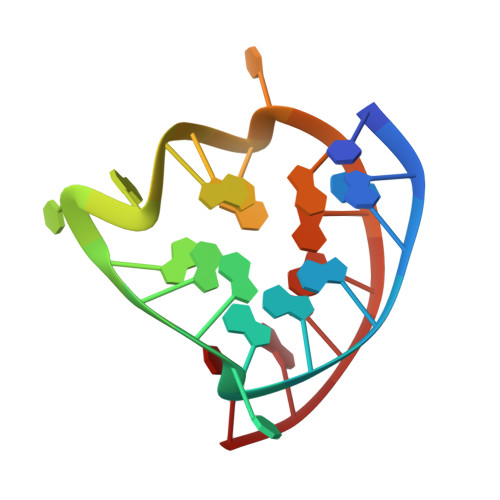Chemical and structural studies provide a mechanistic basis for recognition of the MYC G-quadruplex.
Calabrese, D.R., Chen, X., Leon, E.C., Gaikwad, S.M., Phyo, Z., Hewitt, W.M., Alden, S., Hilimire, T.A., He, F., Michalowski, A.M., Simmons, J.K., Saunders, L.B., Zhang, S., Connors, D., Walters, K.J., Mock, B.A., Schneekloth Jr., J.S.(2018) Nat Commun 9: 4229-4229
- PubMed: 30315240
- DOI: https://doi.org/10.1038/s41467-018-06315-w
- Primary Citation of Related Structures:
5W77 - PubMed Abstract:
G-quadruplexes (G4s) are noncanonical DNA structures that frequently occur in the promoter regions of oncogenes, such as MYC, and regulate gene expression. Although G4s are attractive therapeutic targets, ligands capable of discriminating between different G4 structures are rare. Here, we describe DC-34, a small molecule that potently downregulates MYC transcription in cancer cells by a G4-dependent mechanism. Inhibition by DC-34 is significantly greater for MYC than other G4-driven genes. We use chemical, biophysical, biological, and structural studies to demonstrate a molecular rationale for the recognition of the MYC G4. We solve the structure of the MYC G4 in complex with DC-34 by NMR spectroscopy and illustrate specific contacts responsible for affinity and selectivity. Modification of DC-34 reveals features required for G4 affinity, biological activity, and validates the derived NMR structure. This work advances the design of quadruplex-interacting small molecules to control gene expression in therapeutic areas such as cancer.
Organizational Affiliation:
Chemical Biology Laboratory, National Cancer Institute, Frederick, MD, 21702, USA.
















